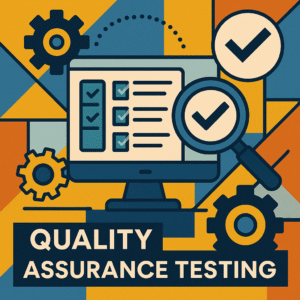Microservices - The New Kid On The Block
Micro Services – The new kid on the block
As the Agile form of software development is making waves and ruling the roost in the software game, a new player is slowly emerging – microservices. It is similar to the many small iterations that characterize the Agile development module. So what exactly is microservices?
To understand this, let us first take into account the two basic styles of software development. First, we have a monolithic design, which is a single application entirely contained in a single process.
This sort of application has several groups of classes that are interdependent. Thus, if changes are made to one class, it affects all the other classes.
Next, we have the microservices architecture. Here, the application has micro-services that come together to make up the whole or combine their processes to execute a task.
Every single microservice has its own specialized, customized responsibility within the application’s structure. They are not dependent on each other, and thus, can be deployed and tested individually instead of having to rewrite the entire application.
Applications in Testing
Microservices have various applications in the automated testing field. Let us first examine testing in isolation. Since microservices are isolated from the application, the entire application need not be changed when you change a microservice, and therefore you can test a microservice in isolation. This is an easy place to start your automated testing journey as it will not affect your entire product, only a part of it.
This does not mean that you don’t have to test your entire application after testing the microservice in isolation. You still have to do that to ensure the microservice has integrated as well as its predecessor, but this is very easy and doable to start to the automated testing journey that will save you a lot of time in the development field.
In an application that is based on microservices, end-to-end testing becomes complicated. For your end-to-end testing needs, a good idea is to follow the Pareto Principle that states that 80% of the consequences stem from 20% of the causes. Thus, the approach you should take is to identify your core services that are absolutely essential and automate them, as you need the least margin of error in testing there.
Pro-tip: Do your testing in production
If you want to keep the quality of your output high, you need to test while in production to end up with the best possible version of your product. Microservices development module is fluid, as every piece does its own work, and behaves in isolation. Thus, unless you test during production, you will not have a clear idea of how the services are interacting with each other, nor will you be able to test this interaction.
Another important aspect that you will need to incorporate into your development module is an excellent monitoring and alerts infrastructure. This is because you need to quickly get on top of any issues that might crop up. Since every single service needs to work in order for your product to achieve an end result, you need to be able to identify, isolate and fix any problem that comes up with lightning speed.
This is cut down if you have a good testing in production framework that includes monitoring and alerts as well. Finally, if your monitoring and production testing is spot on, then not only will you be able to respond to the issue quickly, but you might be able to devolve to a more stable build even before your users know that a problem has occurred.
If you want to learn more about being more productive with Test Automation, contact us at CloudQA ([email protected])
LIKE THIS POST SHARE IT WITH YOUR FRIENDS
RECENT POSTS
Guides

How To Select a Regression Testing Automation Tool For Web Applications
Regression testing is an essential component in a web application development cycle. However, it’s often a time-consuming and tedious task in the QA process.

Switching from Manual to Automated QA Testing
Do you or your team currently test manually and trying to break into test automation? In this article, we outline how can small QA teams make transition from manual to codeless testing to full fledged automated testing.

Why you can’t ignore test planning in agile?
An agile development process seems too dynamic to have a test plan. Most organisations with agile, specially startups, don’t take the documented approach for testing. So, are they losing on something?

Challenges of testing Single Page Applications with Selenium
Single-page web applications are popular for their ability to improve the user experience. Except, test automation for Single-page apps can be difficult and time-consuming. We’ll discuss how you can have a steady quality control without burning time and effort.

Why is Codeless Test Automation better than Conventional Test Automation?
Testing is important for quality user experience. Being an integral part of Software Development Life Cycle (SDLC), it is necessary that testing has speed, efficiency and flexibility. But in agile development methodology, testing could be mechanical, routine and time-consuming.







